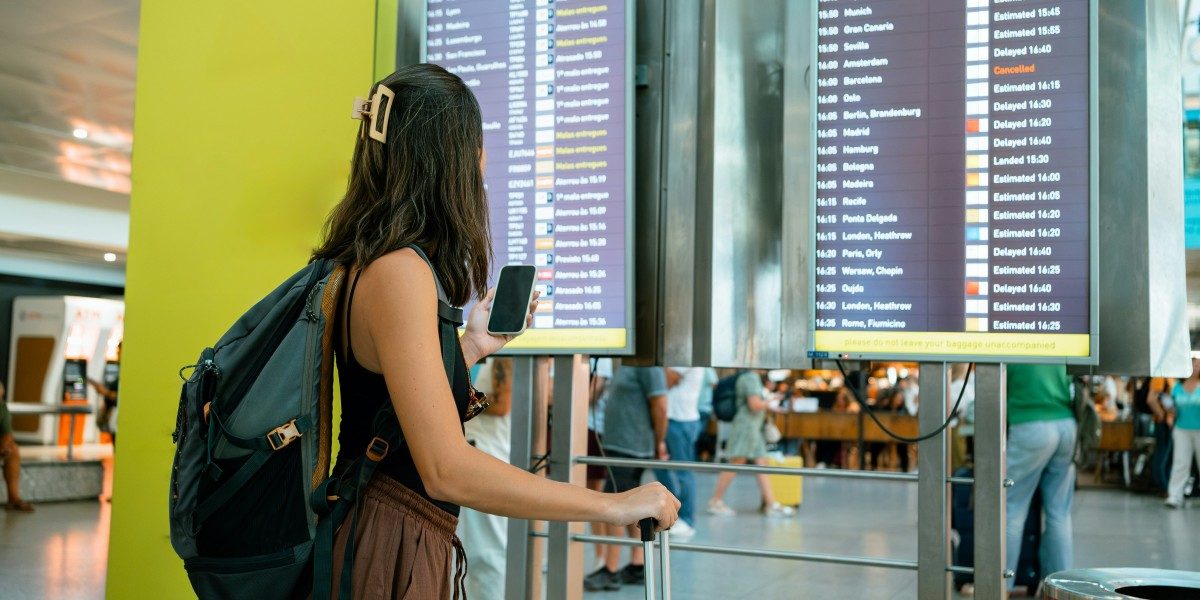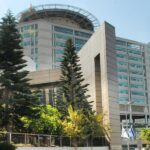What Happened
Travelers heading in and out of New York City faced widespread flight cancellations as the government shutdown disrupted airport operations. Major airports, including LaGuardia, JFK, and Newark, saw hundreds of flights grounded, leaving passengers delayed or stranded.
The situation unfolded quietly but quickly. Cancellations stacked up through the day as air traffic slowed and schedules backed up. For some, that meant waiting in long lines to rebook or spending extra hours in crowded terminals. For others, it meant simply going home and trying again tomorrow.
No one was at fault. Airline employees, air traffic controllers, and airport staff did their best under the circumstances. The cancellations were a ripple effect of the shutdown, which limited available personnel in key federal agencies responsible for air travel operations.
Why Air Travel Is Sensitive to Shutdowns
A government shutdown happens when funding for federal operations temporarily runs out. During that period, agencies like the Federal Aviation Administration (FAA) and the Transportation Security Administration (TSA) scaled back to essential staffing. That means fewer workers managing the same large volume of air traffic.
Air traffic controllers still report for duty because their work is critical for safety. But they may have to work unpaid until funding is restored. This can lead to exhaustion, stress, and occasional staffing gaps. Even a small shortage in one area—say, at a control tower—can create delays across multiple airports.
Commercial air travel depends on precision. Every takeoff and landing fits into a tight sequence. When there aren’t enough hands to maintain that rhythm, cancellations become unavoidable. It’s not about poor management or lack of effort—it’s the natural result of a system stretched thin.
The Chain Reaction Across Airlines
Airlines rely on predictable schedules. Once a single flight is canceled, it can disrupt multiple routes. The crew may end up in the wrong city, and the plane that should’ve been at the gate for the next leg isn’t there. Multiply that by dozens of flights, and the domino effect grows quickly.

New York’s airspace is among the busiest in the country, which makes it more sensitive to disruption. Every change in timing affects other flights that connect through the region. Airlines try to limit the impact by rerouting passengers and reassigning planes, but available options run out fast.
Despite the challenges, most airlines worked hard to help passengers adjust. Staff assisted with rebooking, travel credits, and hotel arrangements where possible. The process was slow but steady, showing that the system, though strained, still functions under pressure.
How Travelers Were Affected
The cancellations caused frustration but also understanding. Many passengers recognized that the problem was larger than any one airline or airport. Conversations among travelers often reflected patience and empathy for those still working during the shutdown.
For those stuck in terminals, the wait was tiring but safe. Airports remained operational, food services stayed open, and staff continued to communicate updates. It wasn’t ideal, but it wasn’t chaotic either. The priority stayed focused on safety and information.
Some travelers took the chance to rest, read, or connect with others nearby. It served as an unexpected reminder that air travel, though efficient, is still deeply human. Behind every delay are people trying to make the best of a tough situation—passengers and employees alike.
How Airports Responded
Airport management across New York worked around the clock to keep operations stable. Staff made regular announcements and guided passengers through changing gate assignments. TSA lines moved more slowly, but officers stayed professional and composed, even while facing uncertainty themselves.
Support teams increased their presence in busy terminals. Information counters provided assistance, and airport volunteers helped direct passengers who needed quick guidance. Cleaners and maintenance workers also extended shifts to handle the higher volume of travelers staying longer than planned.
Coordination with the FAA continued throughout. Essential flights, such as cargo and medical transport, were given priority when necessary. The system adjusted carefully to maintain safety while balancing the limited resources available.
Economic Ripple Effects
Cancellations affect more than just passengers. Local businesses near airports—cafes, shuttle services, and hotels—often feel the slowdown too. In a city like New York, where tourism and business travel play a major role, even a short disruption can ripple outward.
Still, these effects are temporary. Once government funding resumes, agencies return to normal operations and flight schedules stabilize. Airlines and airports typically recover within days, catching up on missed routes and restoring routine service.
The short-term economic impact is usually manageable. People rebook, flights fill up again, and the system resets. What matters most is restoring consistency so that both travelers and workers can plan confidently again.
Staying Calm During Travel Disruptions
When large-scale cancellations happen, the best thing travelers can do is stay informed. Airline apps and email alerts are often faster than in-terminal announcements. Checking updates regularly helps passengers make better choices about rebooking or adjusting plans.
It’s also helpful to travel with essentials—snacks, phone chargers, and any medications—in case delays stretch longer than expected. Flexibility makes a big difference. Understanding that airline staff are under pressure too can ease some of the frustration that builds in long lines.
Most importantly, it helps to remember that flight cancellations, while stressful, are handled with safety as the top priority. Every delay represents a cautious choice rather than a careless one. That focus on safety is what keeps passengers protected, even in moments of national disruption.
A Sense of Steady Recovery
Government shutdowns create stress across many sectors, but aviation remains one of the most resilient. New York’s airports showed that even under tight conditions, the system keeps working. Staff continued to guide flights, help passengers, and maintain order.
The experience also highlighted something reassuring: even during disruptions, cooperation doesn’t disappear. Controllers stayed on duty. Airline teams adapted quickly. Passengers showed patience and empathy. The situation wasn’t pleasant, but it never turned hostile.
That steady effort across different roles shows how strong public service can be, even under strain. When funding is restored, these same teams return to full strength and help restore the rhythm of travel. The system may slow down for a while, but it doesn’t stop.
















